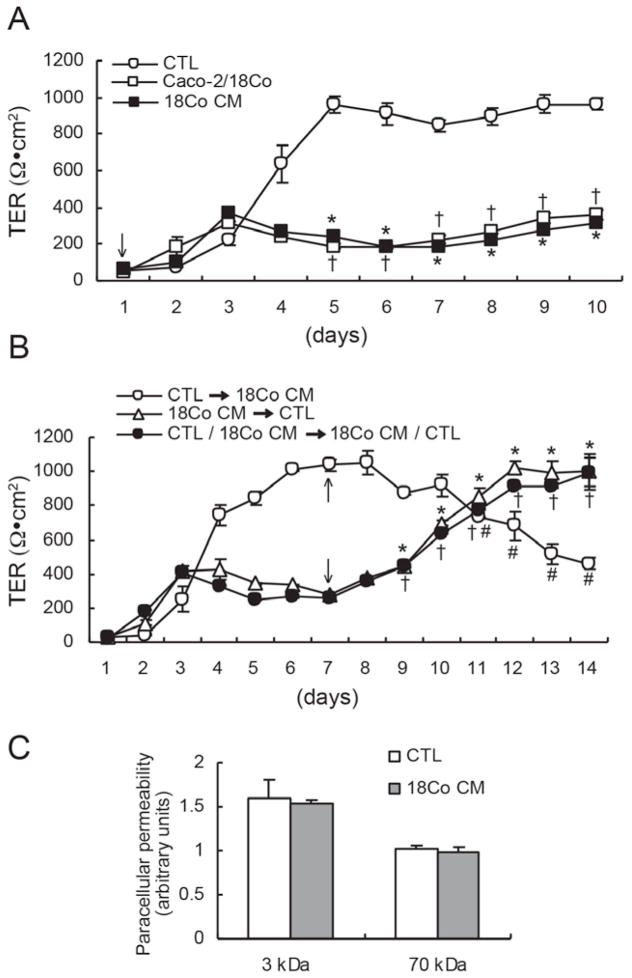Figure 1.
Reduction of TER in polarized Caco-2 cells co-cultured with 18Co cells or cultured in 18Co CM. (A) In CTL (5% FBS-supplemented) medium, Caco-2 TER increased steadily for five days and maintained a relatively constant level thereafter. Co-culture with 18Co cells or growth in 18Co CM decreased Caco-2 TER compared to CTL medium. Data shown are mean ± S.E. of three independent experiments. *†p < 0.001, compared to TER in CTL medium. (B) Caco-2 cells were grown for seven days under three experimental conditions: CTL medium, 18Co CM, or CTL/18Co CM (CTL medium in the upper apical chamber and 18Co CM in the lower basolateral chamber). Seven days after plating (arrows), culture conditions were changed as indicated. For the first seven days, TER remained low when 18Co CM was in both apical and basolateral compartments, or in the basolateral compartment with CTL medium in the apical compartment (CTL/18Co CM). When media was changed on day seven, effects on TER were reversed so that when 18Co CM replaced CTL medium, TER decreased, whereas, when CTL medium replaced 18Co CM, TER increased; reversal of CTL/18Co CM to 18Co CM/CTL also increased Caco-2 TER. Data shown are mean ± S.E. of three independent experiments. *†#p < 0.001, compared to TER at seven days. (C) Paracellular permeability to FITC-dextran (3 kDa) and Rhodamine B-dextran (70 kDa) was measured in polarized Caco-2 cells on Transwell® filters treated with CTL medium or 18Co CM. 18Co CM did not modify transepithelial flux of either tracer. Values are presented as mean ± S.E. of three independent experiments.

